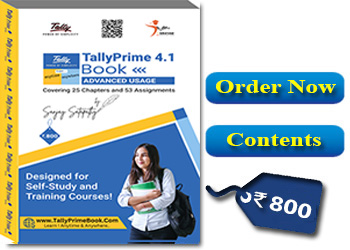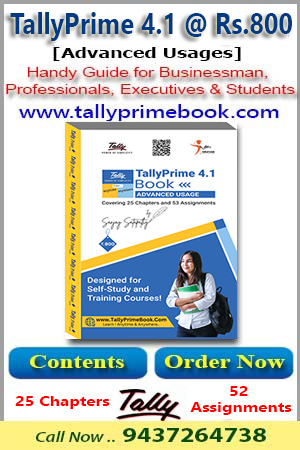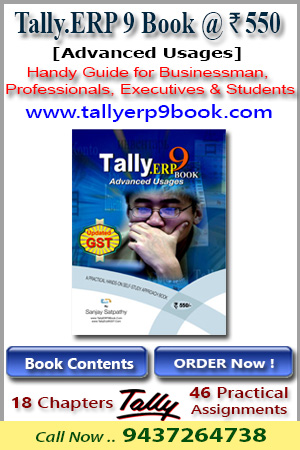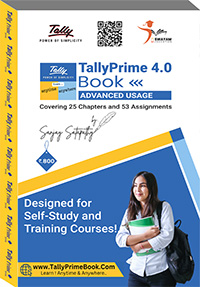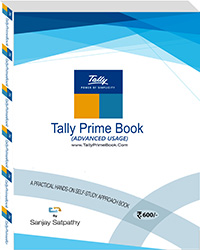1. The GST would be applicable on the supply of goods or services or both as against the present concept of tax on the manufacture and sale of goods or provision of services. It will be a destination based consumption tax.
2. There will be a dual GST with the Centre and States simultaneously levying it on a common tax base. The GST to be levied on intra-State supplies of goods and/or services by the Centre will be Central GST (CGST) and that to be levied by the States will be the State GST (SGST).
3. The GST to be levied on Inter-State Supply of Goods and Services and on import of goods and services (in the place of CVD and SAD) is Integrated Goods and Services Tax (IGST), which is equal to CGST plus SGST. It will be levied and collected by Centre under IGST Act, 2017. Accounts would be settled periodically between the Centre and the States to ensure that the SGST portion of IGST is transferred to the Destination State where the goods or services are eventually consumed.
4. The GST would apply to all goods other than alcoholic liquor for human consumption and five petroleum products, viz, petroleum crude, motor spirit (petrol), high speed diesel, natural gas and aviation turbine fuel. It would apply to all services barring a few to be specified.
5. Tobacco and tobacco products would be subject to GST. In addition, the Centre would have the power to levy Central Excise duty on these products.
6. The GST would replace the following taxes currently levied and collected by the Centre:
a. Central Excise duty
b. Duties of Excise (Medicinal and Toilet Preparations)
c. Additional Duties of Excise (Goods of Special Importance)
d. Additional Duties of Excise (Textiles and Textile Products)
e. Additional Duties of Customs (commonly known as CVD)
f. Special Additional Duty of Customs (SAD)
g. Service Tax
h. Central Surcharges and Cesses so far as they relate to supply of goods and services
7. State taxes that would be subsumed under the GST are:
a. State VAT
b. Central Sales Tax
c. Luxury Tax
d. Entry Tax (all forms)
e. Entertainment and Amusement Tax (except when levied by the local bodies)
f. Taxes on advertisements
g. Purchase Tax
h. Taxes on lotteries, letting and gambling
i. State Surcharges/Additional Taxes and Cesses so far as they relate to supply of goods and services
8. There are 5 tax rate slabs decided by the GST council 5%, 12%, 18% and 28%. In addition Cess will be levied by the Centre on certain commodities.
9. The list of exempted goods and services will be common for the Centre and the States.
10. Tax payers with an aggregate turnover in a financial year up to 20 lakhs would be exempt from tax. [Aggregate turnover shall include the aggregate value of all taxable and non-taxable supplies, exempt supplies and exports of goods and/or services and exclude taxes under the Act viz. GST.] Aggregate turnover shall be computed on all India basis. For North East States and Sikkim, the exemption threshold shall be [ 10 lakhs]. All tax payers eligible for threshold exemption however, shall have option of paying tax and avail input tax credit (ITC) benefits.
The tax payers making inter-State supplies or paying tax on reverse charge basis shall not be eligible for threshold exemption. In other words, The traders supplying goods to other states will need to register under the Goods and Services Tax (GST) even if their turnover is below Rs 20 lakh. "Rs 20 lakh registration limit is only for intra-state traders,"
11. The traders, who have turnover below Rs 20 lakh and supply goods and services within the state, can also go for voluntary registration to avail input tax credit
"But once registered, the traders will have to pay taxes on all supplies, even if turnover is less than Rs 20 lakh,".
Even if there were no transactions in a certain month, return would have to be filed once registration was done
12. Small tax payers with an aggregate turnover in a financial year up to 75 lakhs shall be eligible for composition levy. Under the scheme, a tax payer shall pay tax as a percentage of his turnover during the year without the benefit of ITC. The floor rate of tax for CGST and SGST shall not be less than [1%]. A tax payer opting for composition levy shall not collect any tax from his customers. The composition scheme is optional. The eligible taxpayers shall have the option of switching over as a regular tax payer and thereby paying tax with ITC benefits. Taxpayers making inter-State supplies or paying tax on reverse charge basis shall not be eligible for composition scheme.
13. Tax payers shall be allowed to take credit of taxes paid on inputs (Input Tax Credit - ITC) and utilize the same for payment of GST on outward supplies. However, no input tax credit on account of CGST shall be utilized towards payment of SGST and vice versa. The credit of IGST would be permitted to b utilized for payment of IGST, CGST and SGST in that order. ITC of cess may be utilised for payment of cess only.
14. HSN (Harmonized System of Nomenclature) Code shall be used for classifying the goods under the GST regime.
15. Exports shall be treated as zero-rated supply. No tax is payable on export of goods or services but credit of the input tax related to the inward supply of inputs and input services attributed to supply of such export of goods/services shall be admissible to exporters and the same can be claimed as space refund by them. In case export is made on payment of Tax, refund of such tax shall be given to the exporters.
16. Import of goods and services would be treated as inter-State supplies and would be subject to IGST in addition to the applicable customs duties. The IGST paid shall be available as ITC for further transactions.
17. The laws, regulations and procedures for levy and collection of CGST, UTGST, IGST and SGST has been harmonized to the extent possible.
18. GSTIN will be in the format as specified below, which shall have a checksum digit to locate and process several data based on this unique identification number of the taxpayer, for different business processes like populating data in the domain of connected taxpayers, managing mismatches at item level of supply and purchase data, fund settlement etc.
State Code |
PAN |
Entity Code |
Check Digit |
1 |
2 |
3 |
4 |
5 |
6 |
7 |
8 |
9 |
10 |
11 |
12 |
13 |
14 |
15 |
19. Accordingly, before filing of GSRT-3 following procedure may be followed for rectification and finalization of returns : |


